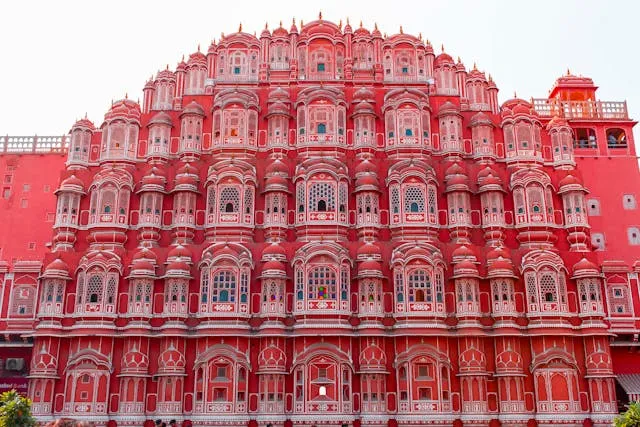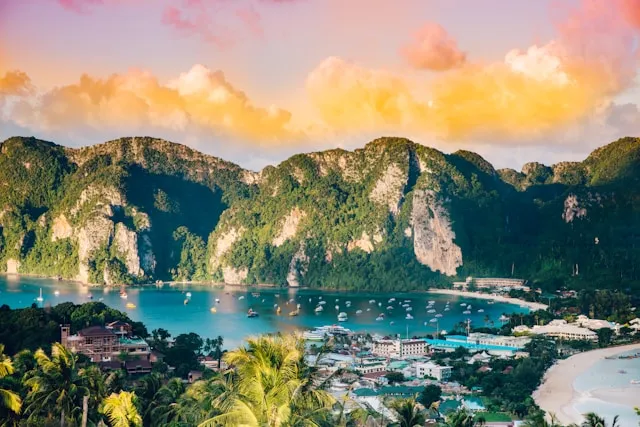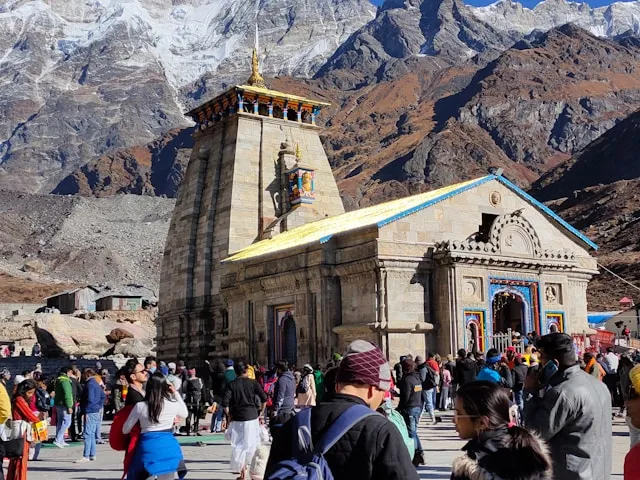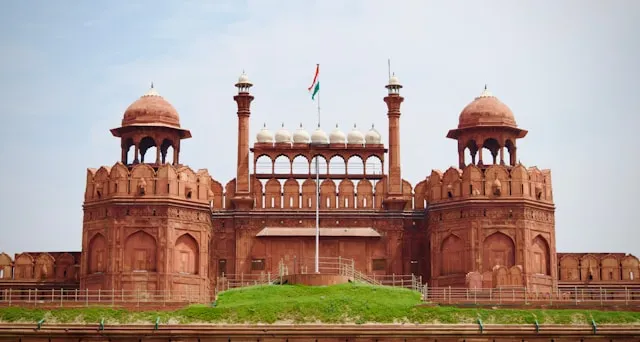Bali Travel Guide
Bali
About Bali Travel Guide
Destination Overview in Bali
Bali, often called the "Island of the Gods," is a breathtaking Indonesian island known for its stunning landscapes, rich cultural heritage, and spiritual ambiance. Nestled between Java and Lombok, Bali captivates visitors with its lush rice terraces, volcanic mountains, pristine beaches, and vibrant arts scene. The island seamlessly blends ancient Hindu traditions with modern tourism, offering something for everyone—whether you seek adventure, relaxation, or cultural immersion. Bali is famed for its warm hospitality, diverse ecosystems, and colorful festivals, making it one of Southeast Asia’s most beloved travel destinations.
Top Attractions & Places to Visit in Bali
Temples & Spiritual Sites:
Uluwatu Temple: Perched on a cliff with panoramic ocean views and traditional Kecak fire dance performances at sunset.
Tanah Lot: Iconic sea temple standing on a rock formation, perfect for picturesque sunsets.
Besakih Temple: Known as the “Mother Temple,” it is the largest and holiest Hindu temple complex in Bali.
Tirta Empul: A sacred water temple where visitors can participate in purification rituals.
Beaches & Surf Spots:
Kuta Beach: Popular for surfing, nightlife, and vibrant street life.
Seminyak: Known for upscale beach clubs, boutiques, and dining.
Nusa Dua: Family-friendly beaches with calm waters and luxury resorts.
Uluwatu: World-class surfing waves and cliffside views.
Nature & Adventure:
Mount Batur Trek: Sunrise hike to an active volcano with spectacular views.
Tegallalang Rice Terraces: Famous for their stunning, emerald-green stepped landscape.
Monkey Forest Ubud: Sacred forest sanctuary home to hundreds of playful macaques.
Sekumpul Waterfall: One of Bali’s most beautiful waterfalls located in a lush jungle setting.
Cultural Hubs:
Ubud Market: A vibrant marketplace with local crafts, textiles, and souvenirs.
Bali Safari & Marine Park: Family-friendly wildlife experiences featuring rare Indonesian species.
Art Villages: Explore villages like Celuk (silver), Mas (wood carving), and Batubulan (stone carving).
Best Time to Visit Bali
The ideal time to visit Bali is during the dry season from April to October, when the weather is sunny and perfect for outdoor activities like trekking, beach visits, and cultural tours. The wet season from November to March brings heavy rainfall, which can disrupt travel plans but also offers fewer crowds and lush green landscapes.
How to Reach Bali
Air:
Ngurah Rai International Airport (Denpasar) is the main gateway, with direct flights from major cities in Asia, Australia, and beyond.
Sea:
Ferries operate between Bali and neighboring islands such as Lombok and Java, offering scenic sea routes.
Accessibility for Differently-Abled Travelers in Bali
Many luxury resorts and modern public facilities in Bali offer wheelchair accessibility and ramps. However, some ancient temples and natural sites like rice terraces may have limited access due to terrain. Planning ahead and arranging assistance is recommended for differently-abled travelers.
Things to Do & Experiences in Bali
Cultural Experiences: Attend traditional Balinese dance performances like Barong and Legong, and participate in temple ceremonies.
Adventure: Trek Mount Batur for sunrise, snorkel or dive around Menjangan Island, or surf world-class waves at Uluwatu.
Wellness: Join yoga retreats and meditation workshops in serene Ubud.
Shopping: Explore local markets for handicrafts, batik textiles, and unique souvenirs.
Cuisine: Savor authentic Balinese dishes such as Babi Guling (suckling pig), Nasi Campur, and sate lilit.
Accommodation Options in Bali
Bali offers a wide range of accommodations:
Luxury beachfront resorts and private villas in Seminyak, Nusa Dua, and Ubud.
Mid-range boutique hotels and guesthouses with traditional Balinese architecture.
Budget hostels and homestays popular with backpackers and solo travelers.
Local Cuisine & Dining in Bali
Balinese cuisine is rich and aromatic. Don’t miss:
Babi Guling: Roasted pig seasoned with spices.
Nasi Campur: Mixed rice served with various meats and vegetables.
Lawar: Traditional spicy salad with coconut and meat.
Fresh seafood, tropical fruits, and street snacks.
Many cafes also cater to vegetarian, vegan, and international tastes, especially in Ubud.
Travel Tips & Safety in Bali
Respect temple etiquette by dressing modestly and following local customs.
Use licensed taxis or ride-hailing apps such as Grab for safe travel.
Be cautious of ocean currents at some beaches, especially for inexperienced swimmers.
Drink bottled water and avoid ice from untrusted sources to prevent illness.
Weather Details & Packing Suggestions in Bali
Pack lightweight, breathable clothing suitable for tropical weather.
Bring swimwear, sunglasses, and sunscreen for beach days.
Carry a light raincoat or umbrella during the wet season.
Comfortable walking shoes are essential for temple visits and trekking.
Currency Exchange & Banking Facilities in Bali
The currency is the Indonesian Rupiah (IDR). ATMs are widely available in tourist areas, and currency exchange bureaus offer competitive rates, especially in Ubud and Seminyak. Credit cards are accepted at most hotels and upscale restaurants.
Connectivity & SIM Card Info in Bali
Major Indonesian telecom providers like Telkomsel and XL offer prepaid SIM cards with good coverage and affordable data plans. SIM cards can be purchased at the airport or local shops with a passport. Free WiFi is common in hotels, cafes, and restaurants.
Itinerary Suggestions in Bali
3-Days:
Day 1: Explore Ubud (Monkey Forest, Art Market, Tegallalang Rice Terraces)
Day 2: Visit temples (Tirta Empul, Besakih), attend cultural dance in Ubud
Day 3: Beach day at Seminyak or Kuta, visit Tanah Lot at sunset
5-Days:
Add Mount Batur sunrise trek and northern waterfalls visit (Sekumpul)
Include a visit to Bali Safari & Marine Park or Nusa Penida island tour
7-Days:
Explore lesser-known cultural villages and beaches
Participate in wellness retreats or cooking classes
Nearby Destinations to Explore from Bali
Lombok Island (via 1-hour ferry) for pristine beaches and hiking
Java Island, including Yogyakarta’s cultural sites, accessible by ferry or flight
Gili Islands, famous for snorkeling and nightlife, reached by boat from Lombok
Shopping & Souvenirs in Bali
Popular souvenirs include:
Handcrafted silver jewelry from Celuk village
Traditional batik fabrics and ikat textiles
Wood and stone carvings from Mas and Batubulan villages
Essential oils, spa products, and Balinese coffee
Cultural & Historical Background of Bali
Bali’s culture is deeply rooted in Hinduism mixed with indigenous traditions. The island’s art, dance, and religious ceremonies have been preserved over centuries. Balinese Hindu temples and festivals reflect the island’s spiritual identity, drawing visitors into its sacred atmosphere.
Best Transport Options in Bali
Scooter rentals are the most popular and convenient way to explore Bali independently. Taxis, private drivers, and ride-hailing apps like Grab provide comfortable and affordable transport. Organized tours offer guided experiences for specific destinations.
Nearest Railway Station or Airport in Bali
Ngurah Rai International Airport (Denpasar) is Bali’s only airport. There are no railway services on the island.
FAQs About Bali
Is Bali safe for solo travelers?
Yes, Bali is generally safe for solo travelers with normal travel precautions.
What is the best time to visit Bali?
April to October is the best time, offering dry and sunny weather.
Do I need a visa to visit Bali?
Most visitors can obtain a visa on arrival, but check requirements by nationality.
Which languages are spoken?
Balinese and Indonesian are official; English is widely used in tourist areas.
Is the food safe for tourists?
Yes, dining at reputable restaurants is safe; street food should be chosen carefully.
How can I get around Bali?
Scooter rentals, taxis, and ride-hailing apps like Grab are common.
Are ATMs and currency exchange facilities available?
Yes, widely available in tourist hubs.
What clothing should I pack?
Light, breathable clothes, swimwear, and modest attire for temples.
Can I use my mobile phone?
Yes, buying a local SIM card is easy and affordable.
Are there photography restrictions?
Respect privacy and temple rules; ask before photographing locals.
Sustainability & Responsible Tourism in Bali
Bali encourages responsible tourism by promoting eco-friendly accommodations, reducing single-use plastics, protecting coral reefs, and supporting community-based tourism. Visitors are urged to respect cultural heritage sites, dispose of waste properly, and support local artisans to preserve the island’s unique environment and traditions.
Need a Bali Travel Guide Customized Itinerary?
Let us create your perfect Bali Travel Guide journey

Gallery

Weather
Location Map
Bali
Latest Blog Posts
Latest News: Bali Travel | Bali Travel Guide 2025 | Best Places, Tips & Itineraries
What Our Travelers Say
Real experiences from our valued customers
"The journey to Haridwar and Rishikesh was amazing. Everything was perfect, and I could focus entirely on the spirituality of the trip."
Manish Kapoor (Chandigarh, India)
"Visited the Ajmer Sharif Dargah. It was a wonderful, well-coordinated trip. Everything went according to plan."
Sophie Davis (Toronto, Canada)
"The Shirdi Sai Baba pilgrimage was incredible. The whole process was so smooth—felt like I was in the best hands."
David Brown (London, UK)
"Had a wonderful time at the Kashi Vishwanath temple. The entire trip was well-organized and very comfortable."
Anil Thakur (Shimla, India)
"Nepal’s natural beauty and sacred temples made this trip unforgettable. The team handled everything perfectly, and we felt well taken care of throughout."
Ashok Yadav (Patna, India)
"The Rishikesh Ganga Aarti was magical. The team ensured the trip was perfectly planned, making it an unforgettable experience."






